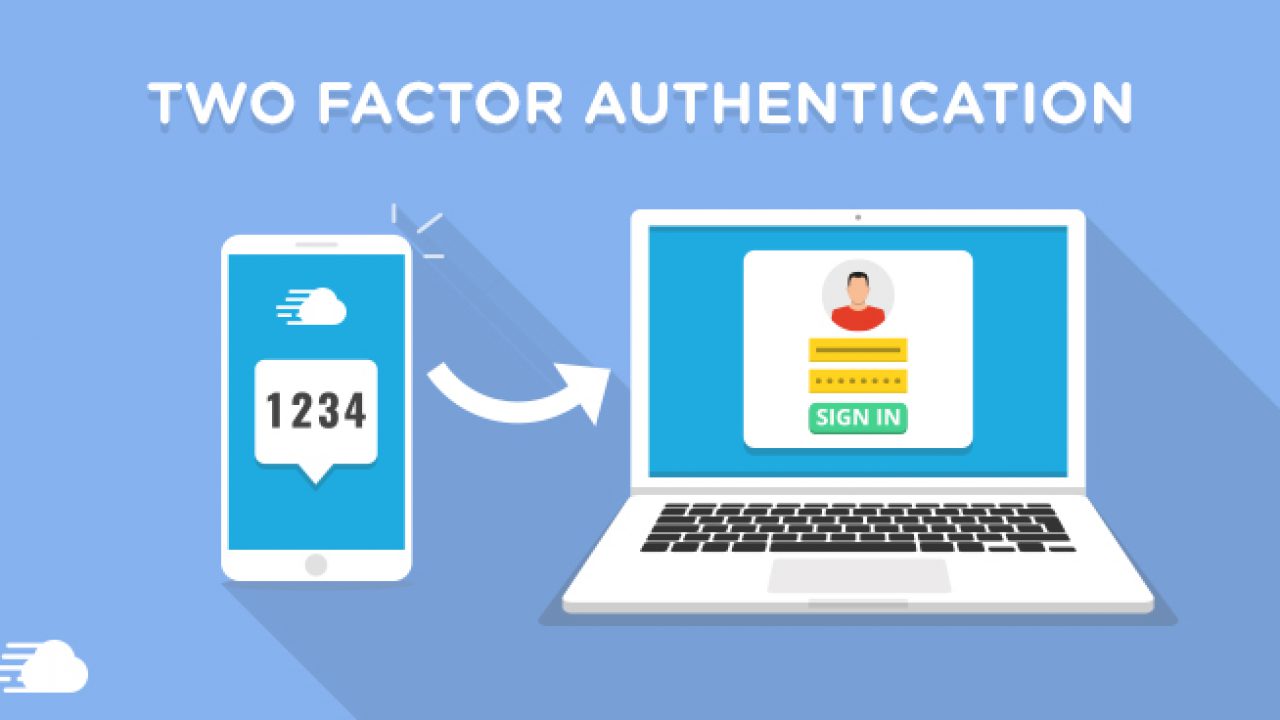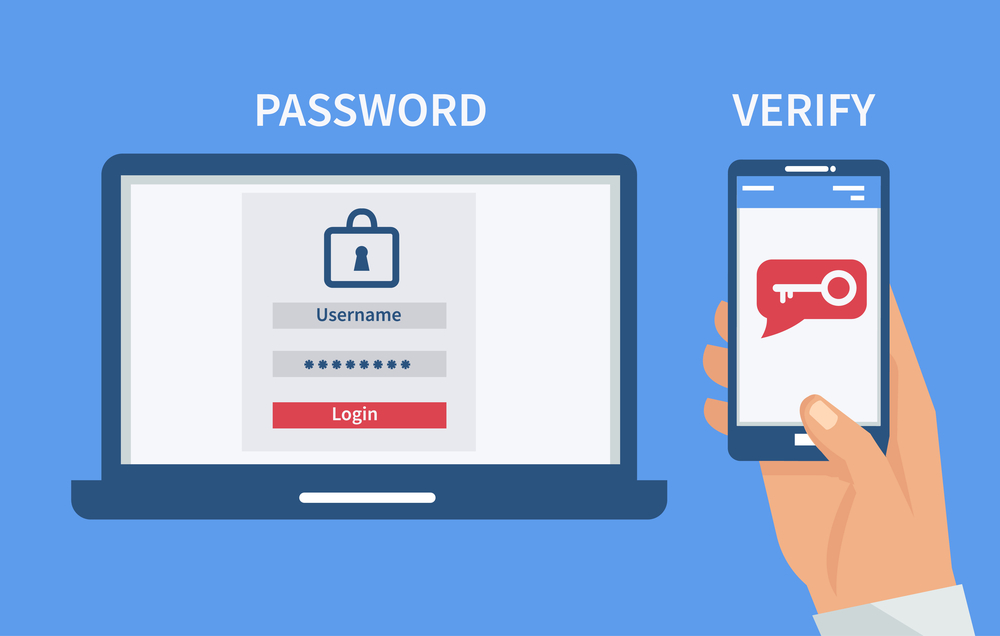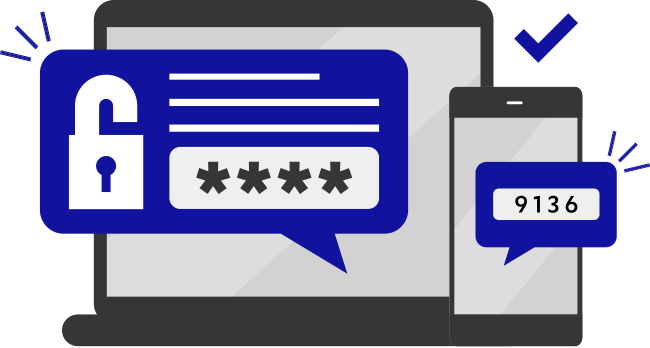Two-Factor Authentication: Your Key to Safer Digital Transactions
Ever clicked “Buy” with a knot in your stomach, worried about who might snag your card info? You’re not alone. It’s no secret that as shopping clicks go up, so do the sly tricks of cyber crooks. But here’s the deal: Two-factor authentication for digital payments is like putting a beefy lock on your digital door. It doesn’t just double-check if it’s really you shelling out the cash–it’s like having a bodyguard for your bank details every time you hit checkout. Dive in as we unpack why this nifty tech is your ticket to chill in the wild world of e-cash!
Understanding Two-Factor Authentication in the Digital Payment Landscape
The Importance of Multi-factor Authentication in Online Transactions
Ever shop online? Then you know how easy it is to click and buy. But here’s the catch: bad guys are always trying to grab your card info. This is why we need top-notch security when buying stuff online.
Multi-factor authentication, or MFA, is like a superhero for your online shopping. It asks for two proofs before letting anyone touch your money. That could be a password plus an extra code you get on your phone. So even if someone steals your password, they still can’t get in without that second key.
The Evolution of 2FA and Its Impact on Mobile Payment Security
Think back ten years ago. We used to swipe cards without thinking twice. Now, we tap our phones to pay. This magic? It’s called 2FA—two-factor authentication. It’s becoming as common as selfies with smartphones.
Back then, we mostly just used passwords. Now, with 2FA, there’s a huge change in mobile payment security. It’s like having a secret handshake with your phone. Only you and your phone know it. You might enter a password and then use your fingerprint. That’s two hurdles for hackers to jump, and trust me, they’re high hurdles.
When you use your digital wallet, 2FA keeps a lookout. It double-checks it’s really you buying those cool sneakers, not some thief. How does it do that? Sometimes it sends a short message with a secret code to your phone. Other times, you might need to let your phone scan your face.
Because of 2FA, shopping on your phone is safer now. We can tap, pay, and be on our merry way. Our card info stays secret. And we get that happy dance feeling, knowing our money’s safe. It’s like our phones guard our wallets like dragons guard treasure.
Now, mobile payment security is tighter than ever before. With every tap, you can feel a bit more chill. If your phone doesn’t recognize you, no one’s buying anything. That’s how 2FA has changed the game—making sure that buying your next favorite thing is safe and sound.
In e-commerce, it’s the same deal. You pick out some neat stuff, head to checkout, and boom—2FA steps in. A quick code on your phone and you’re done. It’s like a secret mission to keep your shopping away from prying eyes.
You see, 2FA isn’t just tech talk. It’s everyday peace of mind. With each year, it gets smarter and tougher on bad guys—and that’s good for all of us. Whether we’re swiping, tapping, or clicking to buy, 2FA’s got our backs. It’s not just the future; it’s now, keeping our digital world locked up tight.
Implementing 2FA to Secure Your E-Commerce and Banking Experience
Step-by-Step Guide to Activating Two-Step Verification for E-Commerce
Shopping online is easy and fun. But it can turn sour if someone steals your card info. We can stop thieves with something I like to call a digital guard. Its real name? Two-Step Verification, or 2FA for short. Here’s how to switch it on for safer online buys.
When you buy stuff online, first find the security settings. It’s like looking for the spot where you change your password. Once you’re there, look for “Two-Step Verification” or “Extra Security.” Sometimes, it might just say “2FA”. Click on it.
Now, choose how you want to check it’s really you buying those cool sneakers. You might get a choice: a text message, a code from an app, or even a fingerprint if you’re shopping on your phone.
After you pick, the site will test it out. They’ll send you a one-time code, or OTP. Put the OTP in where it asks, and boom – you’re in business. Now, every time you check out, they’ll ask for your secret code. A bit like the secret handshake in spy movies.
Your cart is full and you’re at checkout? Wait for your phone to buzz. Get the code, enter it, and only then will your buy go through. This means even if someone has your card number, they can’t shop without your phone. That’s pretty smart, right?
How Online Banking 2FA Safeguards Your Financial Data
Banking from your couch or coffee shop is great. But keeping your cash safe? That’s a must. Banks are super good at this; they use world-class digital guards. Again, it’s our friend, 2FA. Here’s the scoop on how it keeps your dough safe.
First things first, every time you log into your bank online, they want to make sure it’s you. So, after your password, they will ask for a second key. It’s like a double door to your money vault – way safer.
This second key could be anything – a text with a code they send you, a push notice on your phone, or if your bank’s app is fancy, maybe even your voice! We call this voice recognition.
Before you worry about memorizing another password, relax. These codes change every time. No way anyone can guess that. And if you’ve got your phone or your voice, you’re golden.
It may seem like extra steps, but trust me, 2FA is like having a big guard dog. It may bark – or beep – a lot, but it keeps bad guys out. And keeping bad guys away from your e-wallet? That’s top-notch in my book.
So, before you buy that next gadget or check your account balance, take a minute. Set up 2FA. It’s a small move for your peace of mind. Plus, it’s a big win against folks who want to sneak into your funds. Stay safe and shop smart!
Advanced 2FA Methods: Enhancing Your Digital Wallet and Online Checkout
Biometric Authentication and Token-Based Security in Digital Payments
Let’s talk about smart ways to keep your digital cash safe. Think of your face or fingerprint as a secret key only you have. Cool, right? No one else has the same one. This is called biometric authentication, and it’s a big player in digital payment security. When you use your phone to pay, it can check your fingerprint or face to make sure it’s really you. It’s quick and much harder for bad guys to copy.
And then there’s token-based security. Imagine you have a special pass that changes every time you use it. That’s what token-based security does for your digital wallet. It creates a unique code for each transaction. So, if a hacker tries to sneak in, the code won’t work the next time. This stops them from getting your money.
Dynamic CVV and One-Time Passwords: Increasing Security at Checkout
When you buy something online, you want it to be as safe as your biometrics, right? Here’s where dynamic CVV steps in. This is a fresh security code that changes for every purchase. Unlike the regular CVV on your credit card, which stays the same, a dynamic CVV keeps updating. So, if someone steals your card info, they can’t use the old code to shop with your money.
Now, about one-time passwords (OTPs). You’ve probably seen these. When you check out online, you get a text with a code that you type in to finish buying. It’s a secret password that’s just for that one buy. Hackers can’t do much with this because it changes every time. It’s like having a new lock on your door each day. It really steps up the game against anyone trying to snoop in your wallet.
By using these smarter ways to check who you are, we make sure it’s super hard for anyone else to pretend they’re you. No one wants their money taken, right? So, while these fancy terms might sound complex, they’re really just about making sure that your money stays yours. It’s like having the best lock on your digital door, and only you have the key. Plus, these methods aren’t tough to use. They fit right into how we live and shop today, making our online checkout a safer spot to swipe our digital cards.
Best Practices and Future Trends in 2FA for Online Payment Security
The Role of Authenticator Apps and SMS Verification in Preventing Fraud
Have you ever used a code from your phone to log in? That’s two-factor authentication. It’s like having a second lock on your door. It takes more than a password to get into your account.
Why do this? For safety! Just like a bike needs two wheels, your online payment needs two checks for best security. When you buy something online, you want to make sure no one else can pretend to be you. Using your password plus a code from your phone does just that.
Now, we can get texts or use apps for getting these codes. They’re called one-time passwords, and they’re super powerful in stopping bad guys from stealing your stuff. The app or text sends you a new code each time you want to log in. This makes sure it’s really you.
But there’s a catch. Phones can get hacked or texts can be read by others. So, be careful! Think of locking your phone like you lock your house.
Let’s talk about smart apps that help keep your payments safe. They create codes that only work once. This is better than a text because the app makes sure the code is a secret. You can find these apps easily, and they’re simple to use.
Embracing Future Innovations in Payment Gateway and 2FA Technologies
Imagine paying with just your fingerprint or your face. That’s the future, and it’s pretty cool. These are part of something called biometric authentication. They use parts of you that no one else has to make sure it’s really you buying those cool sneakers online.
Now, this might sound like a sci-fi movie, but it’s real! And it’s getting better every day. There’s more coming, like using your voice or even the way you walk.
Let’s not forget how we can make even safer payments in stores. Think about tapping your phone instead of swiping a card. That’s NFC payments. Add a code to that tap, and boom, it’s double secure.
So, what should we do? First, if you can turn on that extra check, do it. It could be a code, your fingerprint, or even your face. Next, make sure your phone and apps are up to date. This keeps them tough against hackers.
Also, watch out for weird emails or texts asking for your code. That’s a trick called phishing. Bad guys try to trick you to steal your stuff. Always think before you share your secret codes.
We have all these cool tools to keep our shopping safe. Use them and stay informed. The safer you are, the less stress you’ll have buying online. And remember, adding that extra step is like putting on a seatbelt. It might take a moment, but it can save the day.
Payment safety is a big deal. As your go-to expert, I’m here to say, let’s keep learning and trying new ways to keep our money safe! Keep an eye on what’s new in payment safety. It’s changing every day, and there’s always more we can do to stay ahead of trouble.
We’ve talked a lot about two-factor authentication, or 2FA for short. From online shopping to checking your bank account, 2FA is key to keeping your money safe. It’s like having a secret code that only you know, on top of your password. We saw how it has changed over time to make mobile payments safer. We even walked through how to turn it on for shopping online and for your banking.
Then, we looked at high-tech ways to use 2FA, like using your fingerprint or a one-time code to buy stuff without worry. Lastly, we checked out smart tips and new tech that will help 2FA guard our online cash even better in the future.
Remember, using 2FA means you’re smart about safety. It’s a simple step that makes a big difference. Stay safe out there!
Q&A :
What is two-factor authentication for digital payments?
Two-factor authentication (2FA) adds an extra layer of security to digital payment transactions by requiring two different forms of verification before a payment is approved. Typically, this means something the user knows (like a password) combined with something the user has (such as a mobile device) or something the user is (like a fingerprint).
How does two-factor authentication enhance the security of online transactions?
By implementing 2FA, online transactions are significantly more secure because even if a hacker manages to obtain your password, they would also need the second factor to complete a fraudulent transaction. This extra step makes it much harder for unauthorized users to access your financial accounts and decreases the risk of financial theft or fraud.
Are there different types of two-factor authentication for digital payments?
Yes, there are various types of 2FA methods, including SMS text message verification, authentication apps, phone calls, emails, and biometric methods like fingerprint or facial recognition. Depending on the payment platform or financial institution, you may be offered one or more of these options to secure your transactions.
Is two-factor authentication required for all digital payment platforms?
The requirement of 2FA can vary from one platform to another. While not all digital payment services mandate two-factor authentication, many are moving towards it as a standard due to the increase in cyber threats and regulations that aim to protect users’ financial data.
What should I do if I’m unable to access my second factor when making a digital payment?
If you’re unable to access your second factor, such as not receiving a text message or an authentication app is not working, you should contact the customer service of the payment service for assistance. They can help you regain access to your account or suggest alternative verification methods to complete your transaction securely.




